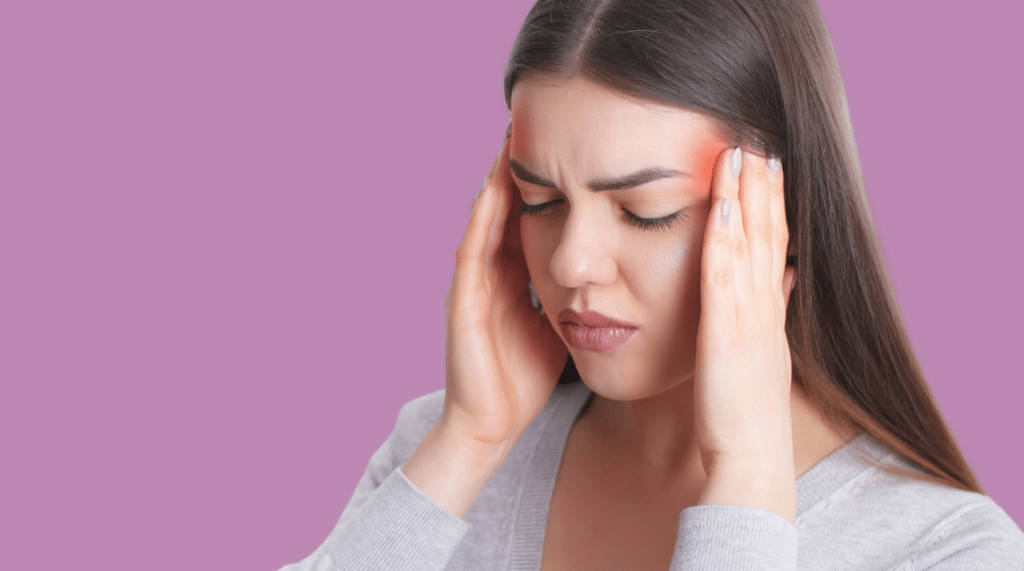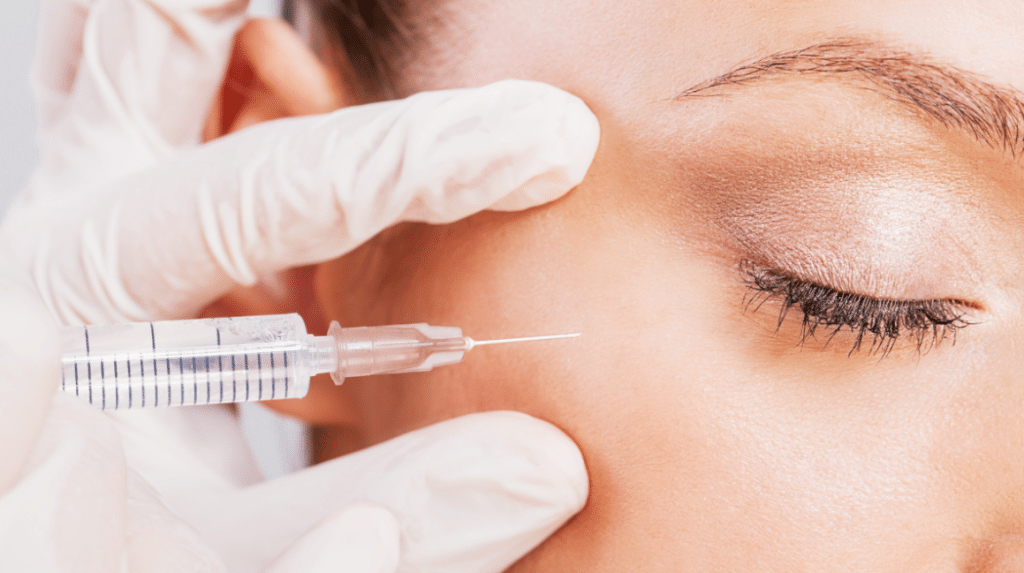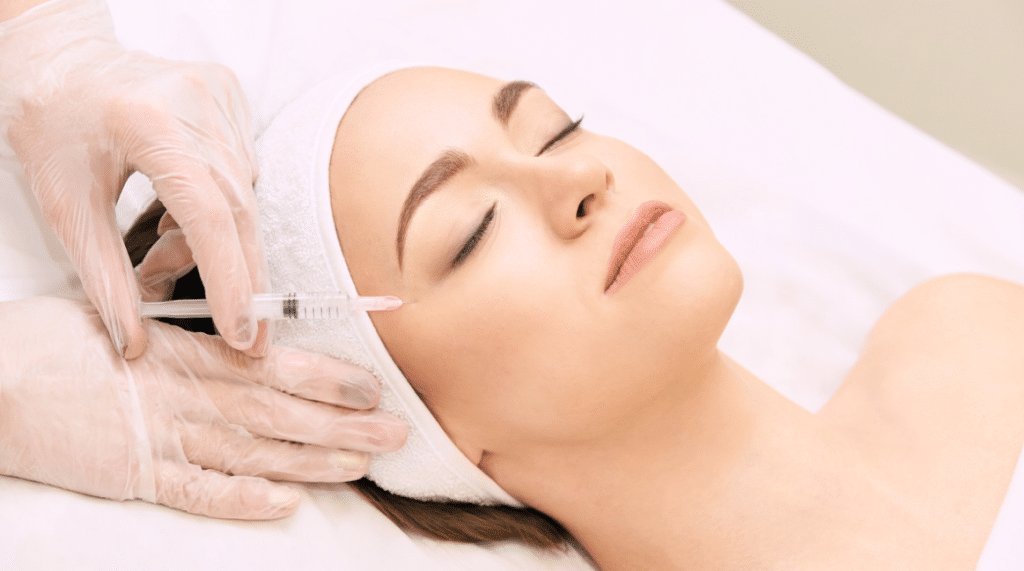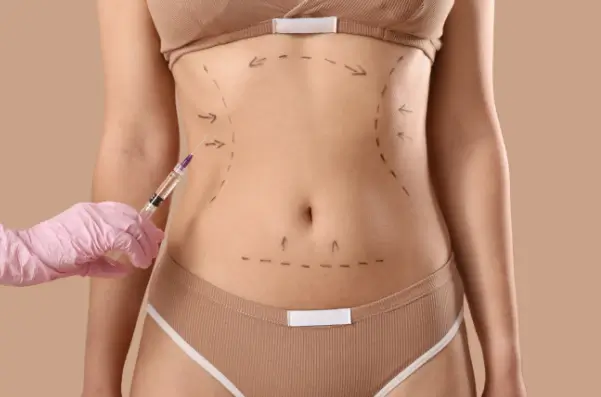John Hopkins Medicine reported that migraines affect millions worldwide, often leading to disruptions in daily life. Among the various treatments available, one surprising yet effective method involves Botox injections.
Botox, primarily used in cosmetic enhancements, represents a valuable treatment against migraines. It uses the drug’s unique properties to offer relief where other remedies may fall short. This shift towards new methods leads us to examine how using Botox for migraines works.
This article aims to explore the treatment’s approach and provide insights into how this method works, its potential benefits, and the overall impact it could have on migraine management.
Key Takeaways
- Botox provides relief from chronic migraines by blocking nerve signals that cause muscle contractions, interrupting the migraine pain pathway.
- It’s approved for adults with chronic migraines—those experiencing headaches on 15 or more days a month.
- Treatment involves injections around the head and neck every 12 weeks, with effects lasting about three months.
- Eligibility includes trying other migraine treatments without success, and discussing health history with a doctor is essential.
- Results and patient experiences vary, highlighting the need for a personalized approach and setting realistic expectations.
- Discover how Botox, often associated with cosmetic procedures, plays a pivotal role in breaking the cycle of migraines by interrupting their pathways. Learn more about Botox as a cosmetic procedure and its therapeutic potential in alleviating chronic migraines.
Understanding Migraines

Symptoms and Types
Migraine symptoms include sensitivity to light, sound, and odors, fatigue, stiff neck, difficulty concentrating, nausea, and dizziness. The headache pain may be throbbing, pulsing, pounding, or dull, often starting on one side of the head and possibly shifting.
Symptoms and frequency vary, with some experiencing migraines a few times a month, often unpredictably, but sometimes with identifiable precursors like stress or hormonal changes.
Causes and Triggers
While the root cause of migraines remains elusive mainly, a combination of genetic predispositions and environmental interactions is believed to play a critical role. Triggers are highly individualized, encompassing stress, dietary choices (e.g., caffeine, alcohol), sleep patterns, and weather changes. This variability underscores the complexity of migraines and the importance of personalized management strategies.
Effects on Quality of Life
The impact of migraines extends beyond physical symptoms, significantly affecting emotional and social well-being. Individuals frequently face challenges maintaining consistent work or study schedules, participating in social activities, and fulfilling family responsibilities.
The unpredictable nature of migraine attacks exacerbates this disruption, underscoring the need for effective, holistic management approaches that address both the physiological and psychological dimensions of the condition.
The Role of Botox in Migraine Treatment

Introduction to Botox
Botulinum toxin type A, known as Botox, is made from bacteria. Botox is good for both cosmetic purposes and medical treatments, like headaches. Botox works by blocking signals from the nerves to the muscles, making the muscles unable to contract.
This results in relaxed muscles. Botox reduces wrinkles and treats excessive sweating, muscle spasms, and eye problems. It is also used to help people with migraines by reducing the frequency of headaches.
Botox’s Approval for Migraine Treatment
Health regulators, including the U.S. Food and Drug Administration (FDA), have approved Botox for chronic migraines. Chronic migraines are defined as having headaches on 15 or more days per month, with at least eight of those days being migraines.
Botox is an option for patients who haven’t found relief with other migraine treatments. The treatment involves getting Botox injections in the head and neck every 12 weeks to help reduce headache days.
Benefits of Botox for Migraine Sufferers
Botox has been shown to help people with chronic migraines by reducing the frequency and intensity of headaches. It works by preventing pain signals from reaching the brain. This can decrease the need for daily migraine medication, which may have side effects.
Botox treatments can improve the quality of life for migraine sufferers, allowing them to have fewer disruptions to their daily activities. The effects of each treatment can last for about three months.
How Botox Interrupts the Migraine Pathway
Botox’s Mechanism of Action
Botox is a neuromodulating drug used for migraine treatment. It’s known for its wrinkle-reducing effects and for interrupting pain transmission pathways between the brain and spinal cord nerves during migraines. By injecting Botox into the muscles around the head and neck, it can interfere with the release of neurotransmitters associated with pain, effectively reducing migraine symptoms.
The Science Behind Botox and Nerve Signals
Research suggests Botox’s efficacy in migraine relief stems from its ability to disrupt pain-associated neurotransmission. Specifically, it targets the junctions where nerves and muscles meet, preventing the release of chemicals in pain pathways. This interference is believed to result from Botox’s uptake by nerve endings around the injection sites, leading to a decrease in migraine pain.
Target Areas for Migraine Prevention
Botox is injected into various muscles under the skin around the face, head, and neck to prevent migraines effectively. Key injection sites often include the forehead, temples, and the back of the head and neck, sometimes targeting specific “trigger points” where migraine pain originates. This individualized treatment approach considers each patient’s unique pain points and anatomy.
Clinical Evidence Supporting Botox for Migraines
Analysis of Results
The clinical results from Botox treatment for migraines show a reduction in migraine frequency and severity for many patients. This outcome is attributed to Botox’s mechanism of action, which involves blocking pain transmission and interfering with the chemicals involved in migraine pain.
Patient Success Rates
Success rates vary among individuals, with some patients experiencing substantial relief from migraines, enabling them to reduce or even discontinue Botox injections. Regular treatments may be necessary for others to maintain control over their migraine symptoms. The treatment should be personalized, reflecting the patient’s pain origins and anatomy.
Preparing for Botox Treatment
Determining Eligibility for Botox
The focus is usually on adults who suffer from chronic migraines to determine if they are eligible for Botox treatment. These migraines are characterized by headaches for 15 or more days per month. Before considering Botox, individuals need to have attempted other migraine treatments without significant relief.
Additionally, eligibility criteria may include evaluating the patient’s overall health status to ensure there are no contraindications to receiving Botox injections.
What to Discuss with Your Doctor
Before starting Botox treatment, having a detailed conversation with your doctor is important. You should share your complete medical history, focusing on any muscle or nerve conditions affecting the treatment’s effectiveness or safety.
Discussing the medications you are currently taking is also essential, as some drugs may interact with Botox. Suppose you have received botulinum toxin products in the past. In that case, this information is important to avoid potential side effects or treatment resistance.
Setting Expectations for Treatment
Although Botox has been effective for many people in reducing the frequency and intensity of migraines, results can vary. Some patients may see significant improvements after the first series of injections. In contrast, others may need multiple treatments to notice a difference.
Factors such as the individual’s response to Botox and the precise locations of injections can influence the outcomes.
The Botox Treatment Process
Step-by-Step Procedure
The treatment involves a series of Botox injections administered around the head and neck by a trained healthcare professional. Typically, the process takes less than 20 minutes, targeting seven key muscle areas to alleviate migraine pain and discomfort.
Immediate Aftercare Instructions
Some patients might experience redness, soreness, or swelling at the injection sites after receiving Botox injections. These side effects are generally mild and should subside within a few days. Following your healthcare provider’s specific aftercare instructions is important to ensure the best possible outcome.
Long-Term Management and Follow-Up
For optimal results, Botox treatments are usually scheduled every 12 weeks. Regular follow-ups with your healthcare provider are crucial to monitor the treatment’s effectiveness and adjust the plan as needed. Some patients may see significant benefits after two or three sessions. However, ongoing treatment is often necessary to maintain migraine relief.
Benefits and Limitations of Botox for Migraines
Pain Relief and Reduced Frequency
Botox injections for chronic migraines have been shown to block chemical signals that cause muscle contractions, potentially alleviating migraine pain by blocking neurotransmitters. This FDA-approved treatment can significantly impact the quality of life by reducing the frequency and intensity of chronic migraines.
Potential Side Effects
For Botox treatment, common side effects may include:
- Redness, soreness, or swelling at the injection site
- Bruising
- Chills
- Fatigue
- Dry mouth
- Neck stiffness
These effects typically resolve within a few days. However, consult a healthcare professional if you have any severe or persistent symptoms.
Limitations and Considerations
Botox is approved explicitly for adults experiencing chronic migraines (15 or more headache days per month) and may not be suitable for everyone. The effectiveness and experiences can vary, requiring a personalized approach in consultation with a healthcare professional.
Patient Experiences with Botox for Migraines
Before and After Comparisons
Patients often start seeing the most significant benefits after the second or third treatment, highlighting the importance of patience and adherence to the treatment schedule for optimal results.
Tips for a Successful Treatment Journey
Considering Botox as part of a comprehensive migraine management plan, including other medications, lifestyle changes, and complementary therapies, can achieve the best outcomes. Regular consultations with a headache specialist or neurologist are crucial for tailoring treatment to individual needs.
Conclusion
Botox represents an avenue for those struggling with chronic migraines, offering a novel mechanism to alleviate pain and reduce the frequency of headache days. It underscores the importance of a comprehensive and tailored approach to migraine management, considering individual symptoms, triggers, and responses to treatment.
As with any medical treatment, consultation with healthcare professionals, understanding potential side effects, and adjusting expectations are crucial steps toward effective migraine relief.
FAQs
- Who is eligible for Botox treatment for migraines?
Adults experiencing chronic migraines, defined as having headaches on 15 or more days per month and who have not seen significant relief from other treatments, may be eligible for Botox.
- How does Botox help with migraines?
Botox injections block the release of chemicals involved in pain transmission, reducing the frequency and severity of migraine headaches.
- What are the common side effects of Botox for migraines?
Common side effects include redness, soreness, or swelling at the injection site, which typically resolves within a few days.
- How often are Botox treatments for migraines needed?
Treatments are typically scheduled every 12 weeks to maintain the effectiveness of migraine prevention.
- Can Botox cure migraines?
No, Botox does not cure migraines, but it is a treatment option to manage and reduce the frequency and intensity of migraine headaches.
References
Johns Hopkins Medicine. (n.d.). Botulinum toxin injectables for migraines. Retrieved from https://www.hopkinsmedicine.org/health/treatment-tests-and-therapies/botulinum-toxin-injectables-for-migraines
Cleveland Clinic. (n.d.). Migraine headaches. Retrieved from https://my.clevelandclinic.org/health/diseases/5005-migraine-headaches
Derm Collective. (n.d.). Botox for migraines: Treatment process, candidates, side effects. Retrieved from https://dermcollective.com/botox-for-migraines/





















